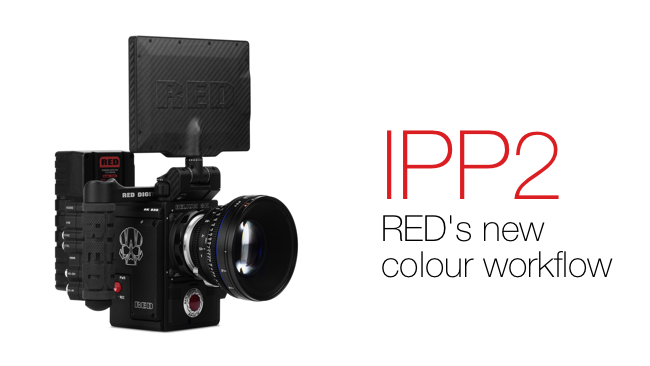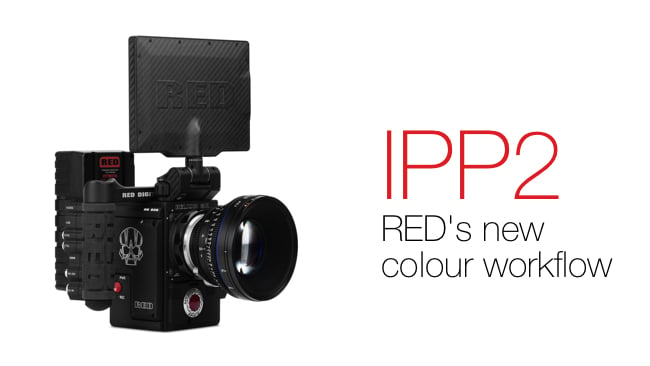

RED’s new Image Pipeline (IPP2) is a complete rework of the original and will improve almost all aspects of working with RED cameras and post producing the images.
When film was the only way to record pictures, cameras were more about ergonomics and engineering than image quality. The "look" of a camera wasn't down to the camera at all: it was almost entirely a function of the lens and film stock. This is perhaps a vast oversimplification, but it is true in essence, especially when viewed in the context of today's digital cameras, where the role of the film is replaced by a sensor and - what, exactly?
Sensors are physical things. They're critical to image capture and the way they accomplish this will bear an imprint on the image for the rest of its life. (Note that when I talk about sensors here, I'm including the analogue to digital conversion process, which can itself have an impact on image quality).
Modern camera sensors have one surprising characteristic: they're monochrome. They can sense brightness but not colour. They count photons, not frequency.
This is an issue then, and it's solved by placing a regular grid of red, green and blue coloured filters over the sensor's pixels. Several patterns are possible but the most used is the so-called "Bayer" pattern. Armed with a knowledge of the pattern, software "decodes" the raw output from the sensor into a high-resolution colour image. How it does this is abstract and complex, and it has a huge bearing on the final look of the image.
This essential part of a digital camera - the image processing pipeline - is also the part that is largely unknown. It’s not surprising: as users we have very little exposure to it. It doesn’t just cover the “de Bayering” process but can incorporate all kinds of other corrections and modifications to improve the default output from the camera.
But it is always there and in a real sense defines the look of the camera almost more than anything else.
That’s why the latest news from RED is so important.
RED’s new Image Pipeline (IPP2) is a complete rework of this enigmatic but essential aspect of RED cameras. It’s a major revision and it will improve almost all aspects of working with RED cameras and post producing the images.
Here’s a bullet list for starters:
- Better management of challenging colours
- Smoother highlight roll-off
- Improved shadow detail
- More accurate mid-tone hues
- An improved demosaicing algorithm to achieve higher detail at the same pixel resolution
- Simpler and more intuitive workflow
- A workflow designed for HDR from the ground up
- Industry-standard naming
- Standardized colour space and gamma
The benefits of some of these are obvious but it’s worth mentioning a few stand-out things:
Challenging colours - Particularly noticeable with self-illuminating objects like LEDs and neons. Instead of a single blown-out colour, it’s now often possible to see detail in the objects.
Smoother highlight roll-off - This will be helpful in almost all circumstance but especially for HDR, which, RED tells us, has been built into IPP2 from the ground-up.
Improved demosaicing - Shows how the resolution derived from a sensor can be improved by software!
Standardised colour space and gamma - This will make it much easier to work with different cameras from the RED range.
HELIUM 8K S35 cameras will be able to monitor and control the new image pipeline in-camera. Other RED camera owners will be able to use IPP2 in post with the latest beta version of REDCINE-X PRO. Installing IPP2 is not irreversible and RED’s original colour science will be available by toggling between IPP2 and the older workflow both in-camera and in REDCINE-X Pro.
Here’s Jarred Land’s announcement of the new build, which also includes the welcome news that UDF file format is now supported, which means an end to 4GB file segmentation; you’ll be able to record ProRes files larger than 4GB.
RED has provided the following information for RED users to get up to speed with IPP2 as soon as possible:
Visit RED’s Downloads page to get the latest DSMC2 camera firmware and REDCINE-X PRO software to take advantage of IPP2. For more information about all of the updates included in IPP2, please reference the IPP2: Image Pipeline Stages, ISO Recalibration for HELIUM, and REDWideGamutRGB and Log3G10 white papers.
IPP2 Overview
In-Camera User Interface
Tags: Production


Comments